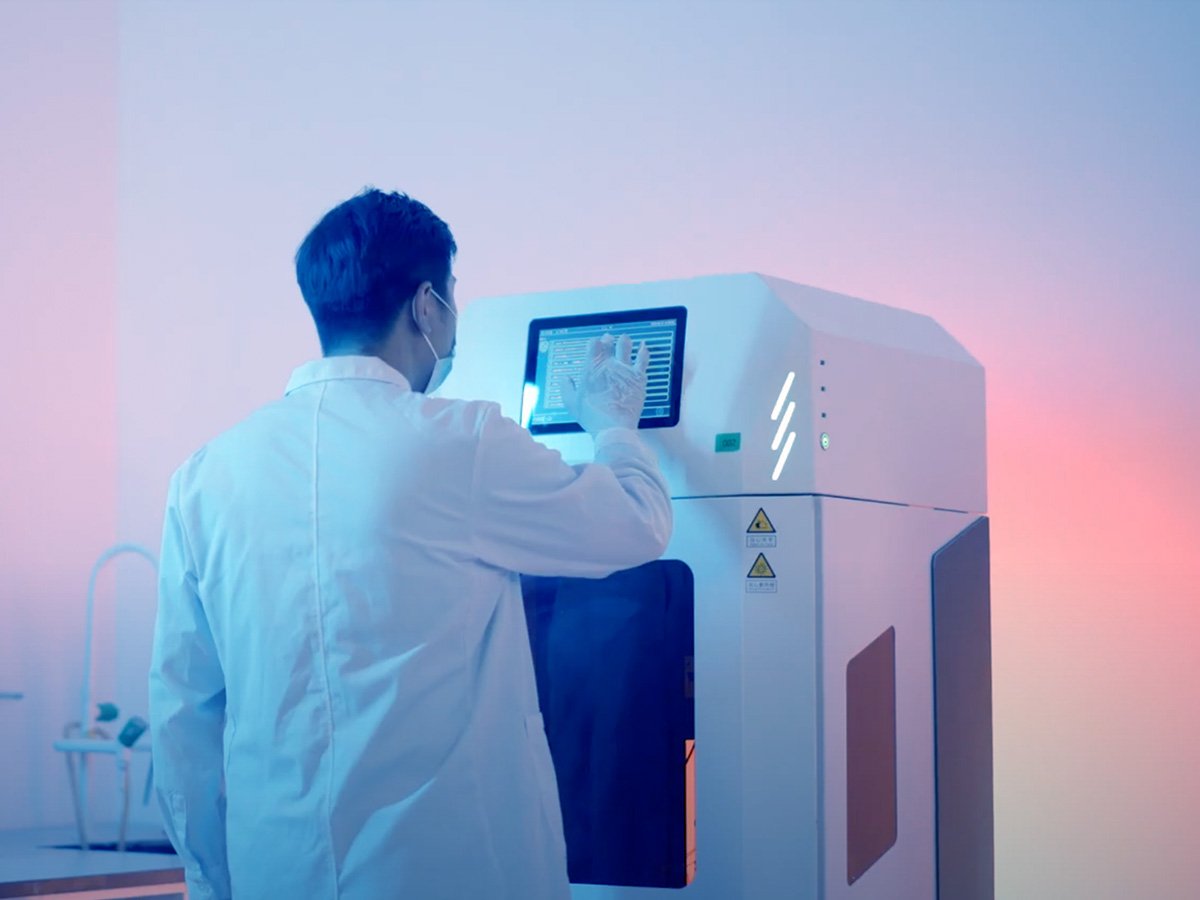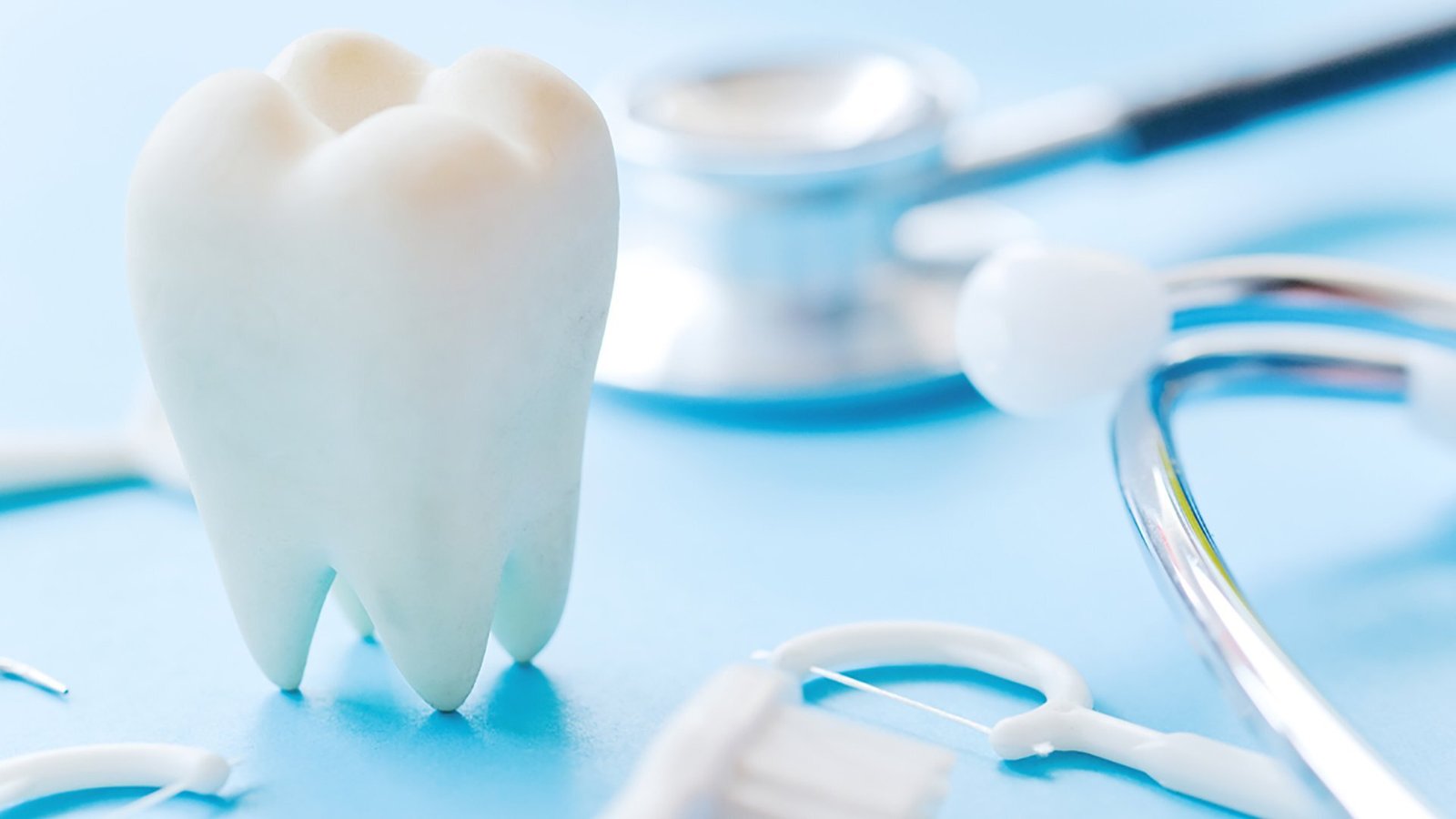If you’re in the dental profession, you might have heard about the emergence of the dental scanner. This tiny and intelligent device is revolutionizing the way impressions are taken. Contrary to traditional ways, it makes it faster, cleaner, and more precise. In this article, we’ll discuss what is a dental scanner, its types, its usage, and why you should be using it, particularly the ones from Aidite. With technology changing rapidly, being current with the proper tools is more crucial than ever.
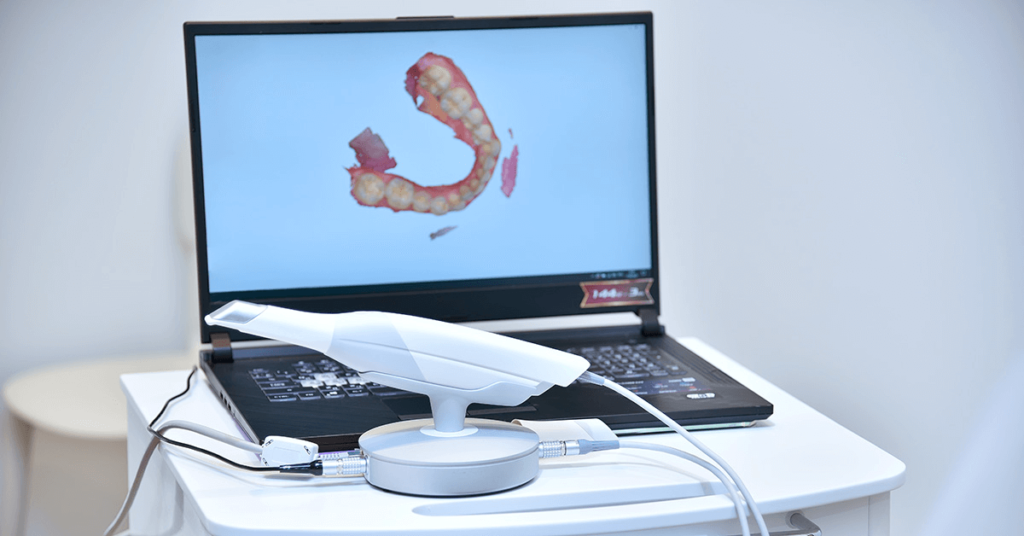
What is a Dental Scanner?
A dental scanner is a machine that scans a patient’s mouth digitally. It scans the gums and teeth to produce a 3D image, which can be used for crowns, aligners, implants, and other procedures. Instead of working with gooey putty, dentists just scan the interior of the mouth with a hand-held scanner or desktop scanner for models. This digital model may then be edited, sent, or shared.
Key features of dental scanners include:
- High-resolution 3D images
- Real-time viewing on a connected display
- Compatibility with CAD/CAM systems
- Data transfer to dental labs at high speed
This digital device is used for treatment planning, designing restorations such as crowns and bridges, orthodontic appliance construction, and so much more. Most patients are curious about what is a dental scanner really able to do – and the response is impressive. Modern dental scanners are able to pick up details as small as 10 micrometers (that’s smaller than a human hair!).
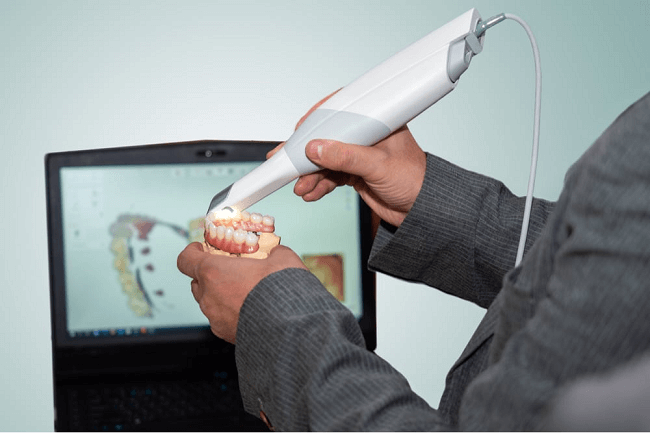
Types of Dental Scanners
There are various kinds of dental scanners on the market today, each for particular applications in dentistry:
Intraoral Scanners
- Small, handheld devices placed directly into the patient’s mouth
- Take precise images of teeth and adjacent tissues
- Best used for creating crowns, bridges, and other restorations
- Most frequently found in general dental offices
Desktop Scanners
- Larger devices that are placed on a counter
- Used to scan physical models or impressions
- More commonly located in dental laboratories than in dental offices
- Greater accuracy for intricate dental procedures
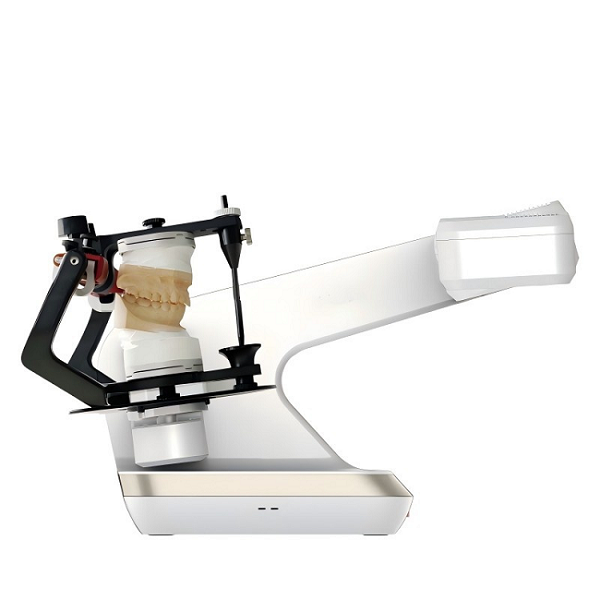
CBCT Scanners (Cone Beam Computed Tomography)
- Produce 3D X-ray images of teeth, bones, and soft tissues
- Mainly utilized for implant planning and oral surgery
- Reveal internal structures that cannot be seen with standard scanners
- Greater radiation exposure than others
CAD/CAM Systems
- Integrated scanners and milling machines
- Be able to design and create restorations on the first visit
- Accommodate same-day crowns and other restorations
- Costlier but provides whole workflow
Benefits of Dental Scanners
Making the transition to digital scanning has numerous obvious benefits:
- No Mess: Say goodbye to impression trays and sticky materials.
- Faster Workflow: Scans are done in a few minutes. No waiting for materials to harden.
- Accurate Results: Fewer mistakes mean fewer remakes.
- Increased Comfort: Patients are more comfortable with a rapid scan than with holding material in their mouth.
- Simple Storage and Sharing: Digital files are simple to store, send, or view later.
- Environmental Friendliness: Less waste is generated than from traditional impression materials.
- Patient Education: Patients can view the scans on-screen and better comprehend their condition.
- Shorter Chair Time: Faster scans result in shorter visits.
- Improved Case Acceptance: Clarity of view usually equals greater patient trust and acceptance.
How to Use a Dental Scanner?
Training in the use of a dental scanner is needed, but the fundamental process is not as complicated as you may think:
1. Preparation: The teeth should be clean and dry before being scanned. Air drying or inserting cotton rolls to absorb saliva might be used by your dentist to dry your teeth.
2. Scanning Process: The scanner wand is gently moved around your mouth by the dentist, recording images of every surface. Complete coverage is guaranteed by the computer software.
3. Review: After the scanning process, the dentist takes a look at the 3D model on the computer monitor to verify the absence of gaps or errors in the scan.
4. Refinement: If necessary, further scans of certain areas may be taken for refining the model.
5. Processing: The completed model is ready and can be utilized directly for treatment planning or forwarded to a dental laboratory for the fabrication of restorations.
The entire scanning process takes around 3-5 minutes for a single arch of teeth or 5-10 minutes for a full mouth scan. This is much quicker compared to traditional impression techniques. Here are some tips you can follow while using a dental scanner
- Use good lighting and a dry field.
- Follow a steady scanning path and never skip surfaces.
- Practice scanning in quadrants for greater accuracy.
- Update your scanner software regularly.
Aidite Dental Scanners
While selecting a dental scanner, dentists look at various aspects like accuracy, speed, ease of operation, and cost. Aidite is a manufacturer of advanced dental materials with 30+ years of experience in making dental scanners.
The Aidite dental scanner provides outstanding precision and user-friendliness in an affordable package. Its ergonomic design and speedy scanning allow it to gain popularity in dental clinics all over the globe. Why use the Aidite dental scanner? Its AI technology for automatic scanning detects margin lines, making crown and bridge work more accurate.
Aidite Infinity 4 Dental Scanner
Infinity 4 is a wireless, high-precision dental scanner with an accuracy of 20µm. Let’s take a look at some of the impressive features of this scanner by Aidite:
- Dual-size scan heads with easy switching to accommodate different mouths.
- 3500mAh battery for uninterrupted scanning for up to 2 hours.
- Shows tiny details by taking pictures in original format.
- Cloud integration for seamless data management.
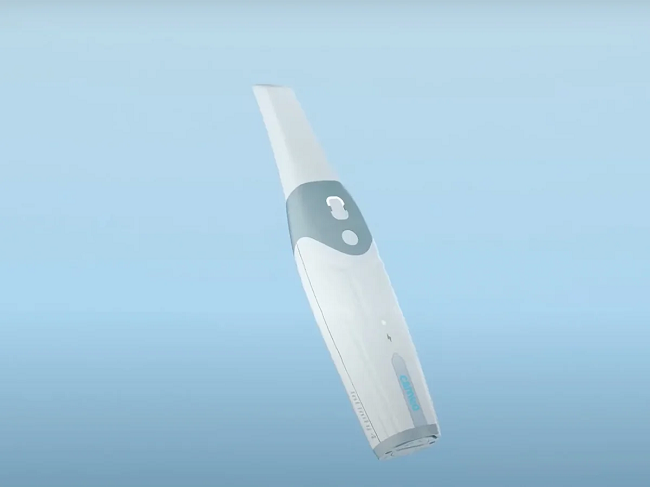
Dental scanner price lists differ significantly based on features and manufacturer. Basic models begin at about $15,000, with high-end models costing upwards of $30,000. Financing is often available from many manufacturers to help dental offices obtain these units.
FAQs About Dental Scanners
How precise are dental scanners?
New dental scanners are very precise, with accuracies of 10-20 microns. This is equivalent to or higher than conventional impression techniques.
Do dental scanners give off radiation?
Intraoral and desk-top scanners rely on light technology (typically LED or laser) and do not give off unsafe radiation. CBCT scanners do emit X-rays, but at a lower intensity than conventional medical CT scans.
How expensive are dental scanners?
Prices of dental scanners vary from $15,000 to $50,000 based on the type, brand, and features. Operating costs are typically lower than recurring costs for conventional impression materials.
Can all dentists use dental scanners?
Any dental professional can be trained to use a dental scanner with proper training. Most companies provide training programs and continuous support.
What is a dental scanner?
A dental scanner is an instrument that takes 3D digital impressions of the teeth and mouth for dental treatments such as crowns, aligners, and bridges.
How does a dental scanner compare to traditional impressions?
A dental scanner is quicker, cleaner, and more precise. Traditional impressions are putty-based and may be uncomfortable.
Final Thoughts
Technologies such as the dental scanner are revolutionizing dentistry—speeding it up, simplifying it, and making it more trustworthy. You don’t have to have sophisticated skills or high budgets to make the move. With shorter sessions, improved outcomes, and more satisfied patients, it simply makes sense to go digital. And if you’re ready to make the leap, Aidite’s range of scanners is well worth a look. With a combination of quality, service, and cost, they’re a sound choice for any modern practice.

